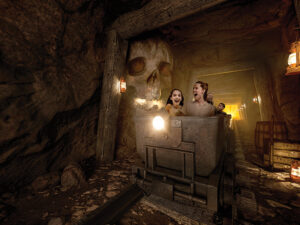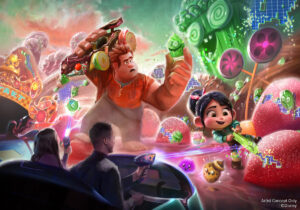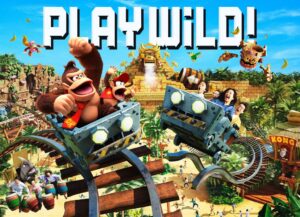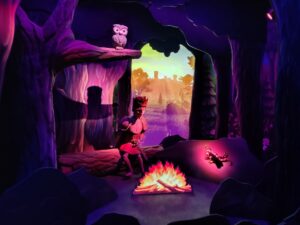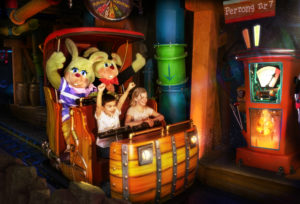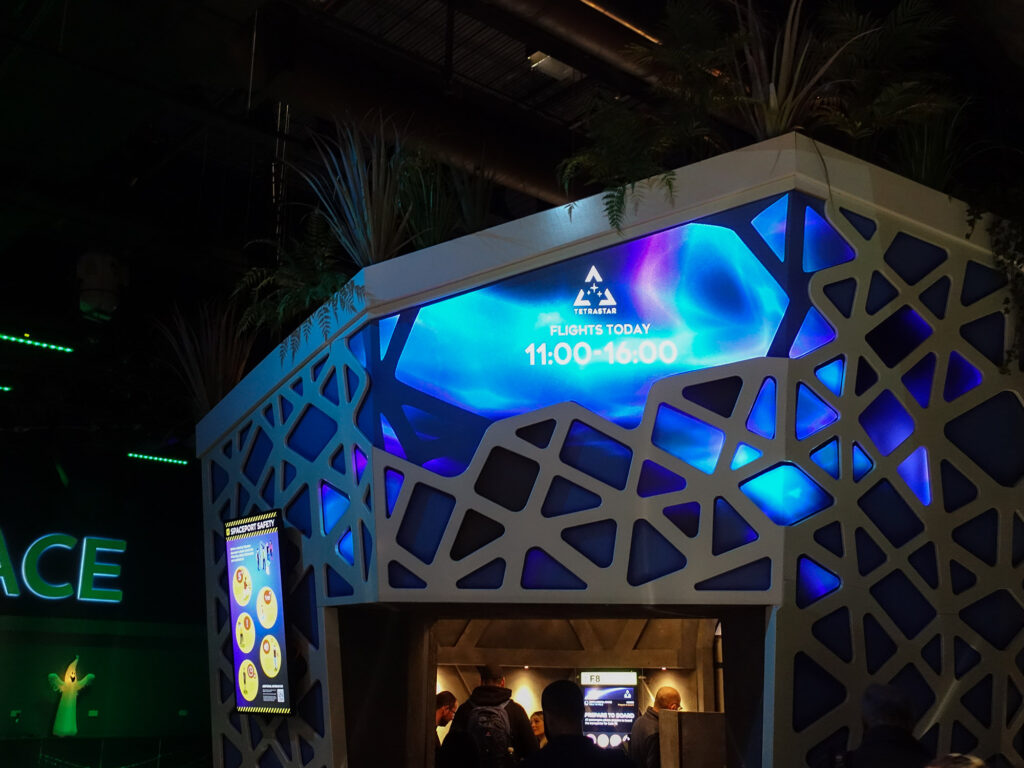
Space travel has always been a source of inspiration for themed experiences, resulting in many incarnations of rides in this theme. Nevertheless, the National Space Centre managed to create a space travel experience which is truly unique in its nature. In Tetrastar Spaceport, museum guests are taken on a 20-minute experience in a small group, making for a very personal experience. So how does one conceive such a unique experience, even though the theme itself has been used so many times already? Team DRdb went to the Space Centre to ask such questions to the development team, and of course we did not pass up the opportunity to experience Tetrastar Spaceport for ourselves.
The National Space Centre (NSC) is based in Leicester, U.K., and has been since 2001. That year, it was officially inaugurated and opened to the public by former NASA-astronaut Jeffrey A. Hoffman. The NSC was one of the projects funded by the Millennium Commission, a public body in the U.K. that invested in a range of projects that celebrated the start of the third millennium. Apart from the NSC, this programme also funded the Millennium Bridge in London and the Eden Project in Cornwall, for example.
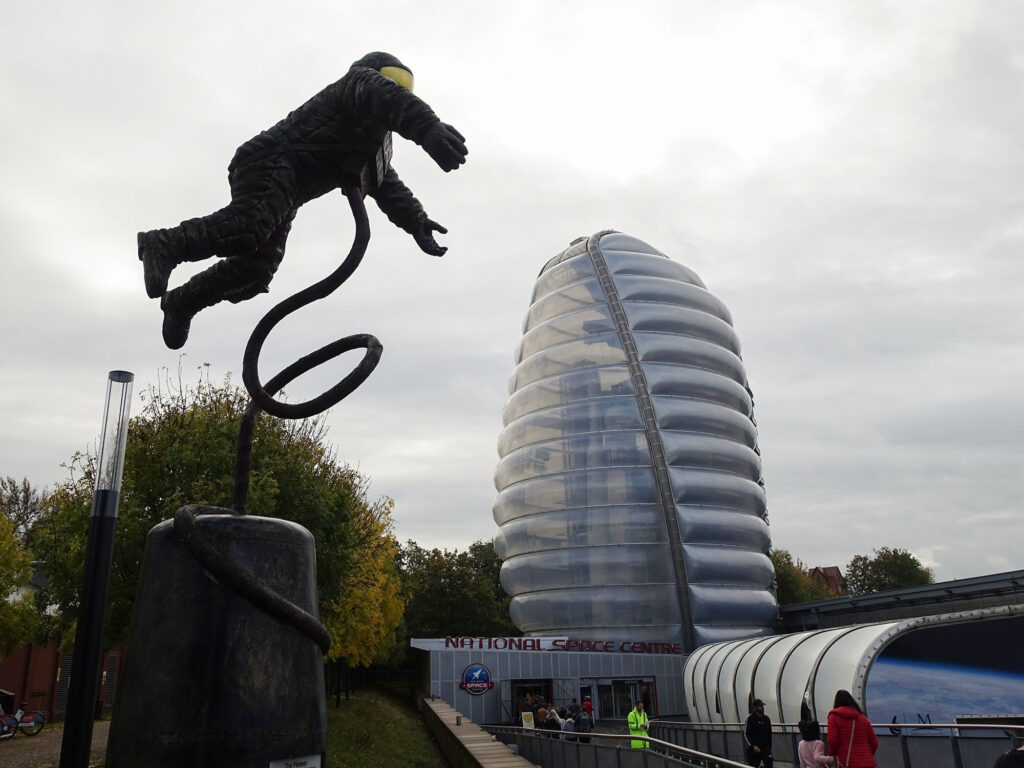
Ever since the National Space Centre was founded, it has included its own creative team, called NSC Creative. The team started off designing graphics and other aspects of the museum. Aaron Bradbury, who has worked at the company since 2007, recalls that the work of NSC Creative rapidly expanded beyond just graphic design:
“In 2007, we were starting to make commercial fulldome films: we create the films that are played in the Planetarium at the NSC. From that moment, we splintered off from the Space Centre a little bit. That is, we are a different business unit within the Space Centre: we work for the Space Centre, and we are in the same organisation. But we can do things outside the National Space Centre. In that way we have been doing commercial work for theme parks or for VR experiences. Actually, we have worked on lots of flavours of immersion.”
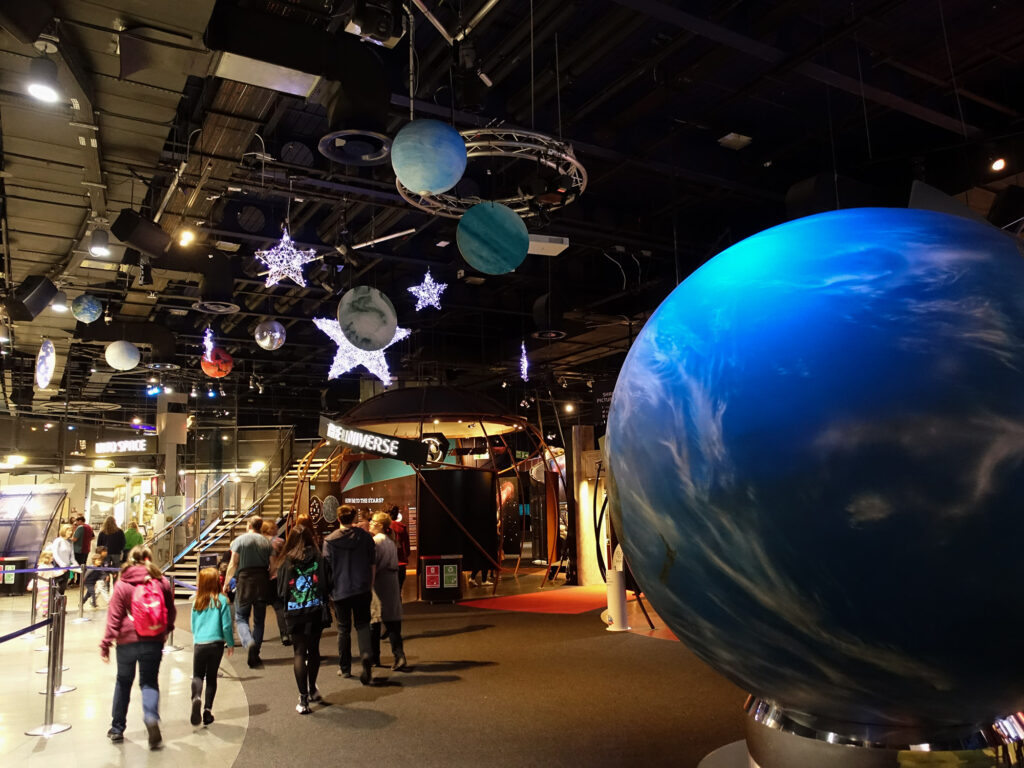
“Because we developed some really interesting stuff for other venues over the years, we also wanted to do something similar for the Space Centre,” Aaron continues. “We have done some escape rooms and other stuff and decided to combine such things for a Space Centre experience.” This combination of previous experiences eventually became Tetrastar Spaceport.
The concept of the experience was designed by the team of NSC Creative, working with many specialist collaborators along the way. For example, Meticulous Ltd were a key collaborator integral to the layout design and handled the build process and all scenic elements and physical interactives. A small concept team from NSC Creative worked on the project for a long time to enable all the stakeholders to be included. Once the build process began, extra members of the production and development team were added.
Two of the people who were part of the core team were Aaron Bradbury, in the role of creative director, and Stephen Ray, who worked on the interactive elements of the ride as lead software developer. Team DRdb had the opportunity to interview both on the development of Tetrastar Spaceport.
Ride experience of Tetrastar Spaceport
Before elaborating on the interview, let us first look through the normal ride experience of visitors of Tetrastar Spaceport. Team DRdb was allowed to undergo the experience while filming and photographing, which is usually prohibited, giving us the opportunity to capture every detail. To check out the complete experience of Tetrastar Spaceport, watch the video below:
When walking around the National Space Centre, we cannot miss the modern façade with big screens indicating the entrance of Tetrastar Spaceport. A small queue line is created outside the entrance gate, where we wait for a short while until an employee lets us into the first room of the experience.
This first room is called ‘departures’, and that’s exactly what it feels like: we find ourselves in a room with modern architecture, nice plants and lights are suspended from the ceiling and large screens inform about the departing flights. The room functions as something between a queue room and a pre-show, allowing the operators to create the 20-people groups that are taken through the experience. On the screens, we can see that our flight (‘Earth Orbital Cruise’) is about to leave in a couple of minutes. The departure times are alternated with news flashes about extreme solar radiation waves, and advertisements subtly introducing an AI-character called ADA, who will become an integral part of the story during the experience.
When it’s time to board, the door is opened by Skylar, our host during the flight who is acted by an employee of the NSC, functioning as both character and ride operator. In the next room, we also find ADA in the form of a glowing tetrahedron prop, who is briefing us for our flight together with Skylar. The introduction is however interrupted by Commander Pillinger, who says that the current solar radiation spikes have grounded her fleet and threaten valuable research on a station on Mars. The only chance to retrieve the specimens from the station lies with us, as we are the closest spaceship and can make our way to the station in time.
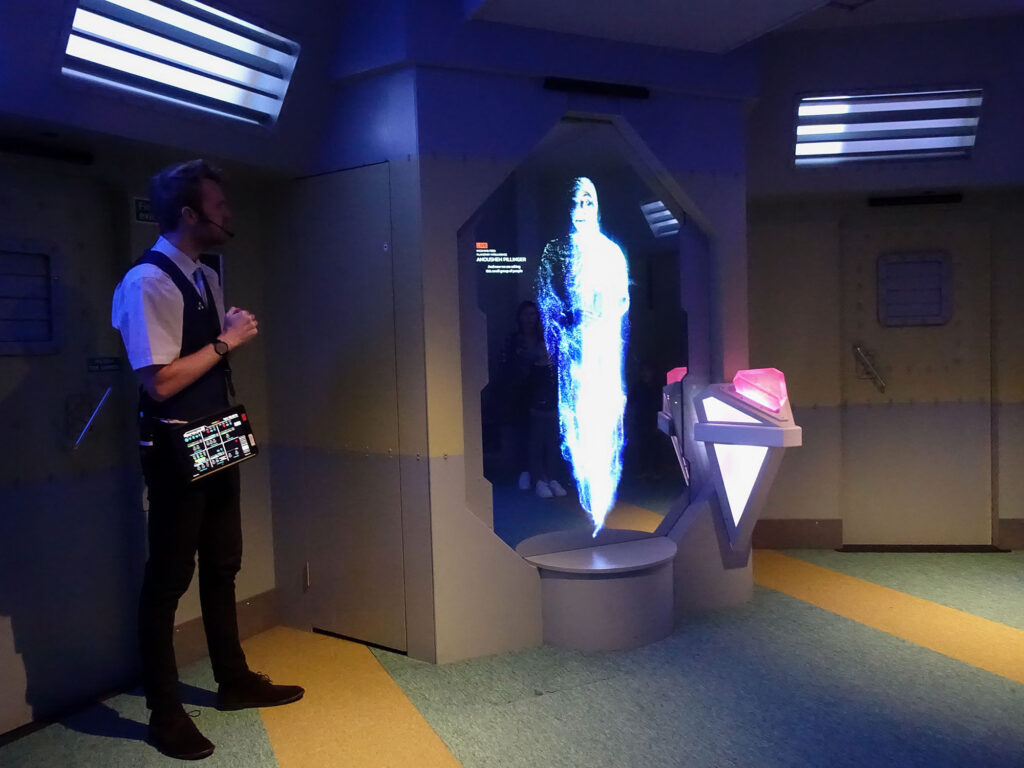
Encouraged by ADA, who claims that we should be able to make the trip a success, provided we work closely together, we take the challenge and get ourselves ready for a flight to Mars. Skylar, who will also be joining us, hands out special tags that we will need along the way before leading us to the next room. One of the children is asked to take ADA along as well, as we will need the assistance of the AI-machine to fulfil our task.
The next room is the simulator, where we are invited to take our seats and fly to Mars. We are accompanied by ADA and by the pilot, a woman called Jo Schiaparelli. Each seat is equipped with a button, and ADA explains that we need to push these buttons together at specific moments to make for a smooth flight, working together as a team. We take off for our flight and quickly approach Mars, where we fly over the planet’s surface and through canyons before arriving at the research station. Each time we fail to press our buttons simultaneously, the ship crashes onto the rocks, but eventually we manage to reach the station ‘in almost one piece’, according to ADA.
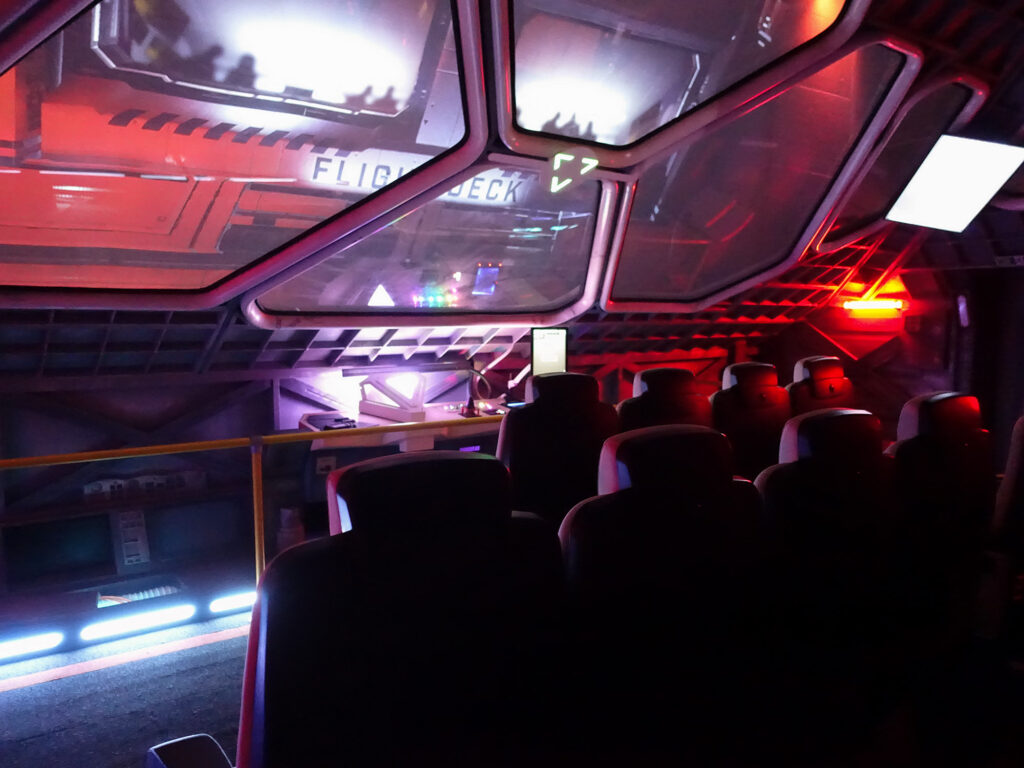
After we made it to Mars, we enter the research station. Here again we find futuristic architecture, with specimens and plants stored around the place and a large window allowing a view over Mars. The room is full of small research elements which play out like games for the guests. Encouraged by ADA, each of the group members uses the tags that they were given by Skylar to find ‘their own’ mini game to play in order to retrieve one of the valuable specimens. Once we have retrieved all the specimens, we need to charge the escape pod to make our way back to earth, as a dust storm is heading our way.

With the escape pod charged, we quickly make our way inside. The whole group needs to squeeze in a bit, as the escape pod is not meant for such a large group. During our flight, we again need to work together to make our way back safely, but eventually we touch down on the Earth’s surface. Once we have landed safely, Commander Pillinger and Skylar thank us for our work on retrieving the unique specimens and award us with a special medal. Our flight is over but leaves us with a big smile: the whole tour feels really personal with such a small group and the accompanying actor, making for a pleasant, unique and very convincing 20-minute experience.
Ideation and inspiration
Now that we are back on Earth and described the normal experience of Tetrastar Spaceport, it is time to continue get back to our interview with Aaron and Stephen to learn more about the development of Tetrastar Spaceport. As was mentioned before, they told us that the NSC Creative team wanted to combine some of the things they designed for other parks to create something unique for the National Space Centre. Aaron continues to explain how the whole ideation process that led to Tetrastar Spaceport was started.
“The initial concept was conceived by Paul Mowbray, executive producer at NSC Creative, about 5 years ago. But we didn’t really start working on it until 2019. We had the idea that it should be a narrative-based, immersive experience, but it was still very open to what it could be. We started throwing ideas around, and soon felt that we wanted to take people on a journey. Like to outer space and back again.”
However, the nature of the journey has long been a point of discussion. “We had three separate scenarios initially: the ride would start in a spaceport with different destinations that you could go to. We thought of a mission to Europa (a moon of Jupiter), a Moon mission and a mission to Mars.”
“For the Europa mission, you would have travelled down into the ice to the oceans; everyone wanted to make that, we conceived these weird alien creatures in the ocean that were quite exciting. Eventually we had to decide to stick to Mars, as it is a big [target] destination in space travel currently, so we thought it connected better with our audience. To allow for different scenarios we skinned the decorations in such a way that only the visuals tell you where you are going; there are no clues on that in the physical theming.”
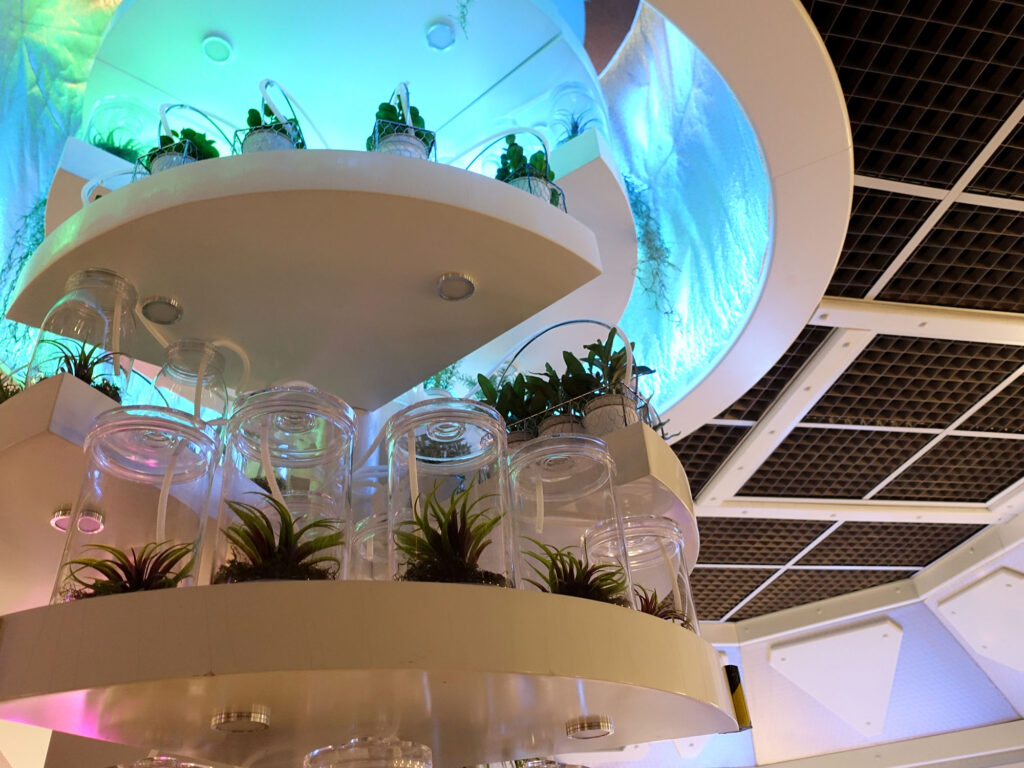
When conceiving Tetrastar Spaceport, the NSC Creative team took their inspiration from many different sources. “Quite a heavy inspiration was a previous project that we did for the Eden Project. Back in 2017, we created a six-week summer experience for them, which was a journey into space. Now, that project feels like a prototype version of what we did with Tetrastar Spaceport.”
More inspiration came from visits to various locations, such as the Dungeons in London and the Shrek Experience. “Yeah, some of them may sound a bit obscure,” Aaron says with a grin, “but you’ll find some elements in Tetrastar Spaceport which developed from an idea in these experiences.”
He explains that ADA in particular is inspired by multiple ideas from other experiences: “When we did our research for Tetrastar, an escape room opened nearby and invited us to come down and test it. They had this clever idea of using an AI-character as a means of giving the hints throughout the room, and one of our colleagues really connected with that character. That’s when we came up with the idea of adding an AI to Tetrastar, and we combined it with this idea from Shrek Experience where people gather totems which they need to take from one room to the next. That’s how we were inspired to create ADA as a tangible character.”
The NSC Creative team succeeded remarkably well in creating an emotional connection between ADA and the guests, by the combination of the tangibility of the character and her constant encouragements. Believing in the guest’s teamwork, ADA convinces both the group and the other characters of the experience that this team is able to fulfil their mission. The story arc of ADA culminates in the escape pod, where it decides to sacrifice itself and transfer its energy to the pod, in order to get the rest of the team safely back to earth. This point in the storyline creates a powerful emotional moment in the ride, which is hardly seen in themed experiences.

Already during the ideation phase of Tetrastar Spaceport, the team needed to think about the capacity of the experience, to make sure that all visitors of the Space Centre could go through the experience on a busy day. With a cycle time of 20 minutes, the possibility of operating 4 cycles simultaneously, and a target of 1400 people to handle on a complete day, groups of 20 people were necessary to make to desired capacity.
“You should know, before we built Tetrastar, the space it occupies now was already part of the Space Centre and it was already sectioned off in different rooms,” Aaron explains. “The simulator room could fit 20 people, but we needed to stretch or shrink some of the other rooms to make them fit the group. I think the escape pod is still quite small, we need to cram people in there, but there are narrative reasons for that.”

Teamwork and interactivity
As we noticed throughout our own trip at Tetrastar Spaceport, the experience includes a high degree of interactivity. In multiple rooms, guests are invited to interact by playing mini games, pushing buttons and carrying ADA. This is part of a broader concept: “From quite early on, pushing teamwork as a main idea was part of our vision on the experience we wanted to create,” Aaron says. “It takes inspiration from major space travel projects, such as the Apollo mission which had 400,000 people involved, working together to get people to the moon.”
The total experience includes three rooms with interaction. In the simulator room and the escape pod, each of the seats is equipped with buttons that need to be pushed within a certain timeframe. The research centre obviously involves interactivity via the mini games. In the end, each team is granted a medal based on how well they performed in the interactive tasks. Stephen explains how this works: “Each group is tracked throughout the entire experience and process. The eventual score is very heavily weighted from how well you do in the simulator ride, but also how many specimens you retrieve and how you perform in the escape pod.”
“We had many discussions about the way and the extent in which we should ‘gamify’ the experience,” Aaron adds. “We could have added specifications on how well you did in each area, but we thought that this would highlight that it’s not a real experience. Some age groups might want to know how well they did and what their score was, but younger kids might come out thinking it was all a real experience. For that reason, we decided to keep it subtle, by awarding a silver, gold or platinum medal. Some people getting a silver medal might get a hint that they could have performed better, but that’s something subtle.”
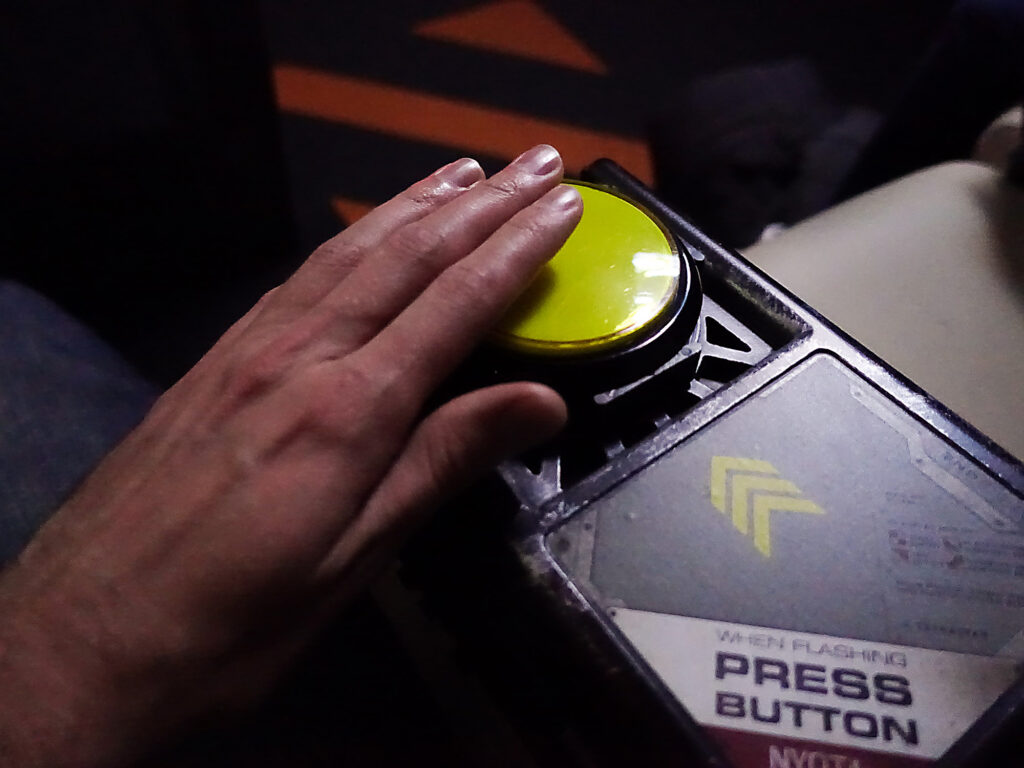

To make the simulator-part as interactive as possible, the team decided to create the media content in Unity, allowing the experience to respond to the actions of the riders in a more complex way than traditional pre-rendered films. “Unity is a 3D game engine,” Stephen explains. “The whole experience is real-time and has multiple possible paths. There are two main branches that converge but go different ways depending on how you do on each individual instance.” The whole system also adapts to the number of people in the group, Stephen continues: “For the first three interactions, the system gauges how many people are in the simulator. If no one reacts for the first three it assumes there’s no one there.”
Aaron explains that the team started with ideas of more complex interaction for this room: “Earlier we had another idea to give guests different roles in the simulator, but we decided it would become too complicated for a group of 20 people to get everyone to understand what their role is. In the end, we stripped it back to just the button that everyone has, which affects whether you crash or keep flying smoothly. The outcome affects not only the film, but also the seats and the lighting.”
“Apart from that, you get different cues depending on your group’s performance. The responses by Jo [the pilot] and ADA are constantly negative reinforcement or positive reinforcement of teamwork. ADA is the positive one when everyone gets it right, but Jo is the antithesis of teamwork, grumbling when the team doesn’t work perfectly and taking things in her own hands when that occurs. This is until a moment where she crashes the ship, after she has taken over control. At that point, she learns her lesson and starts to see that the entire team is needed to complete the mission.”

Building the story
With the main ideas of the storyline and interaction set, the team went on creating the different rooms of the whole experience. Tetrastar Spaceport consists of five rooms: departures, briefing, simulator, research station and the escape pod. The first two rooms are meant to create the storyline, and the other three encompass the entire adventure through outer space. The simulator is thus only one element in the total experience, rather than the central main show as is generally the case with similar rides.
The departures room functions partly as a queue line and partly as a pre-show, allowing the team to give small hints towards the storyline of the ride without immediately starting with explicit storytelling. “We had that idea from a project we did for a theme park, back in 2015,” Aaron describes. “Researching for that project, we went to visit the major parks in Orlando to see how they did stuff. There, we noticed how terrible the queue line experiences were in those parks. That opened our eyes: actually, you can do some good narrative stuff in the queue line and set people up for the big story.”


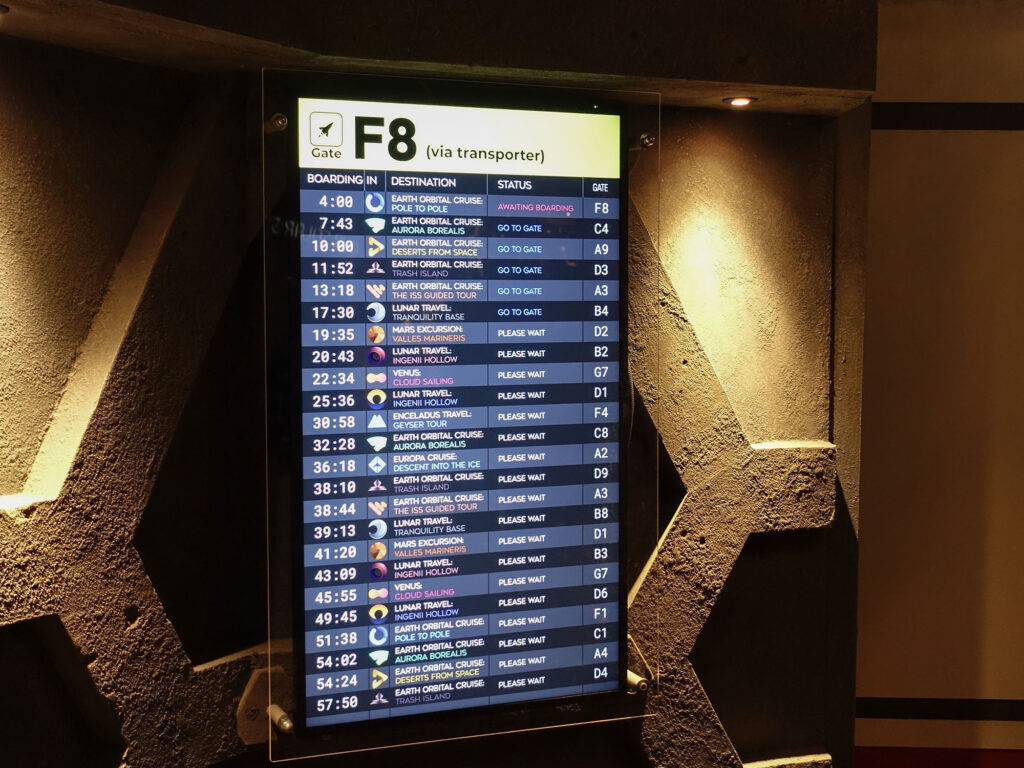
“So, departures became our intro to the story. You’ll see the introduction of ADA in there, and the news clip which tells you about radiation. You might not catch those adverts, but there are a few hints in there if you do. And it’s amazing to see that these hints work pretty well. We have seen some kids, when they walk into the next room [the briefing room] and they immediately point to ADA and say ‘there’s ADA!’ They know it, even though they’ve only seen like a cartoon version of her in the advert. Kids pick up on those things really well and then they know that character already.”
The briefing room is also the place where Skylar, the other prominent character, introduces themselves. “We wanted a person to be with the group in that enclosed space for safeguarding, especially with family groups,” Aaron explains. “Initially this character was meant to lead the group through the experience. Later, we changed the script and Skylar became more a person taking the back seat. They aren’t the leader, they are just part of the team and can ask questions to ADA on behalf of the team.” During the briefing, Skylar acts just as surprised as all other guests by the interruption of Commander Pillinger, but they are asked to join the group for the mission to Mars.
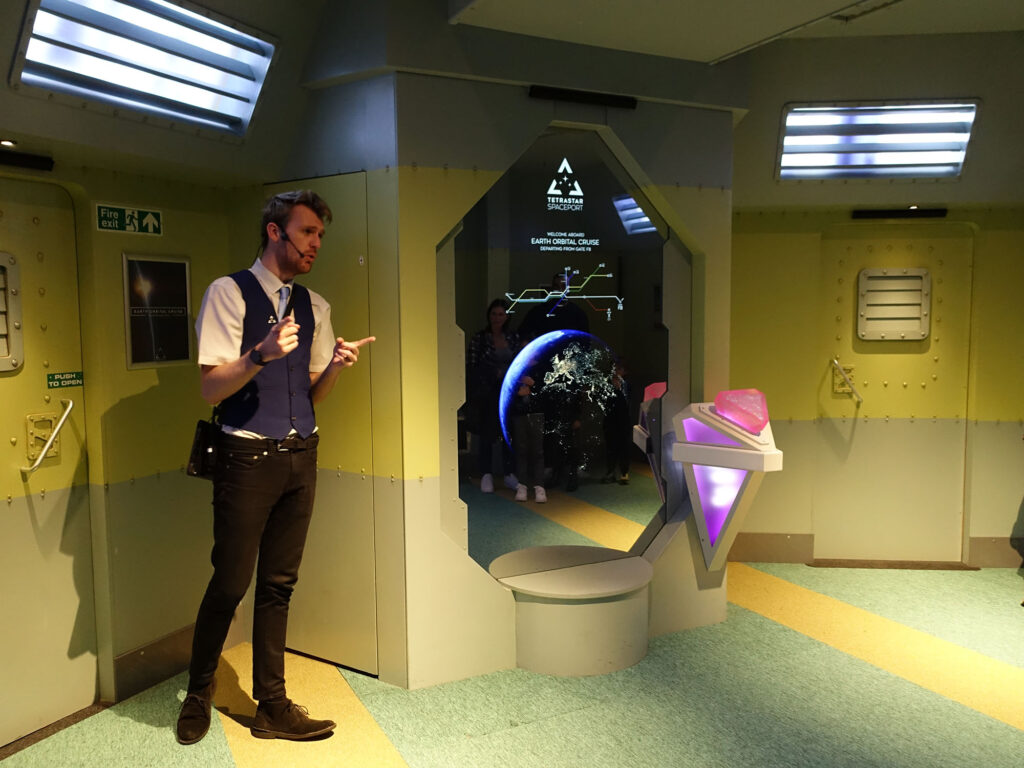
The flight to Mars
With the mission set by Commander Pillinger, and Skylar and ADA joining the group for help, the next room is the simulator room encompassing the flight to Mars. Aaron and Stephen recall that the design for this room was quite a difficult task in the creation of Tetrastar Spaceport. “We went through quite a few iterations of different designs for that space, as it’s actually a rather awkward space to fit 20 people inside who still should get a good experience,” Aaron says.
Having a simulator in that part of the National Space Centre was not new; there used to be a hydraulic simulator platform there before Tetrastar Spaceport was created, Aaron says. “We already had a simulator ride in that room, but that was very different: it only fitted six people and was a more traditional simulator, with a motion platform and a stereoscopic display at one end. The throughput of that ride was really low so we wanted another type of simulator. However, the walls were already there, the room was soundproofed, fire escapes in place and everything. So, even though it was hard to fit a larger simulator in there, it made sense to stick to the same room.”
“We looked at many options,” Aaron continues. “We even thought of an immersive tunnel, but that was problematic in getting people in and out as you should do loading and unloading on the same side. We also had an idea with motion-platform pods with tv-screens on the edges, of which we would place four on the room. Then, the whole thing in which you sit moves and the screens move along. However, the Space Centre didn’t want to use 3D glasses because of all the fuzz with handing them out and collecting them, and without glasses the illusion of these pods doesn’t work that well.”
“That is how we ended up with the idea of this internal window-system, as well as the sort-of parallax cube that helps build the illusion of depth. And it works really well in giving that sense of being present in a real sort of space. When we settled on that window-idea, we needed to find a way to bring in 20-25 seats. I remember we had like 15 options for what that room could be: at one point we had two layers in there, so people standing up at a higher level and people sitting down at lower level. We didn’t know what it would be until we started fitting stuff in and see what would work best.”

However, arranging the room was not the only challenge to overcome regarding the simulator. Aaron tells us that the seats became a rather critical element in the design. Apart from comfort and movement, the NSC Creative team had one very specific demand: real-time interactive integration with the seats. So, the seats should move accordingly with the actions on the screen that were produced by the Unity game engine.
“The problem was that no-one had yet developed a fully functioning version of that,” Aaron recalls. “There is a lot of pre-rendered stuff out there, but we wanted it to be interactive and dynamic. So that if we are crashing, the seats should do the motion accordingly, and if we succeeded through interaction, we want the seats to do something else. That’s how we came to Simworx, since they had done some stuff in that direction. They had this VR-installation with a single seat which they had in some real-time motion controller. So they had some prototypes, but not pushed it into a live project yet.”
Stephen explains how this works for Tetrastar Spaceport: “We use the Simworx Control Master SDK [short for Software Development Kit, a collection of software tools] which was updated specifically for this project. It allows real-time communication from the Unity application to the seats, so sending the position values of the seats, and then being copied across on the fly. We developed that SDK together with Simworx. That was our reason to go with them, as they were keen to develop something real-time for their system.”
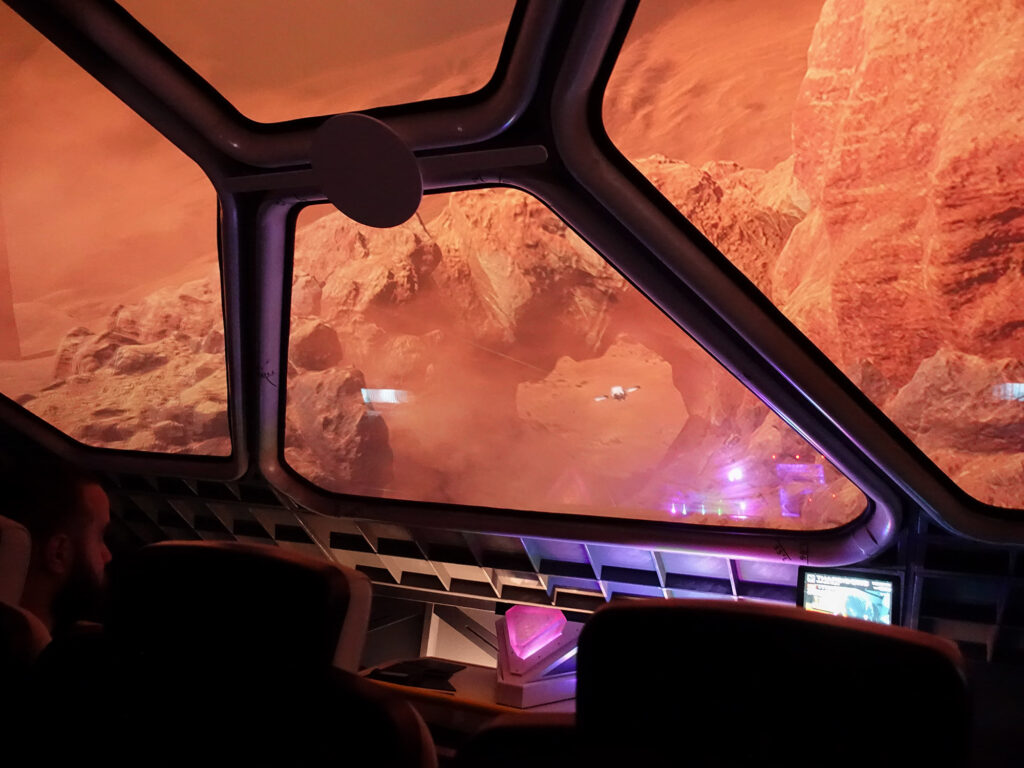
The educational experience at the research station
The most unique part of the ride experience of Tetrastar Spaceport however is the research station, where each visitor gets their own task to fulfil by solving a mini puzzle. “Some of the inspiration for that room came from Escape Room experiences,” Aaron recalls. “The challenge here was to keep all things very simple, because you only have 3.5 minutes in that space. There is a lot going on when you walk into that room: you’re trying to get your bearings, listening to instructions, and then finding your station/object and what to do. And then, you need to complete your task. We wanted everyone to complete their task – if people don’t get it, it could be quite disappointing.”
“The puzzles were initially quite complicated. We spent a lot of time redeveloping them to make them a lot simpler than they were. We had to tailor it to a wide range of abilities and ages, to suit families with children who would try and let the kids do it themselves. We had to do a lot of user testing; we’re actually still doing that now. The games were stripped back and became quite quick and easy to do for some, but that does mean everyone gets to collect their specimen and have their ‘yes, we did it!’ moment.”
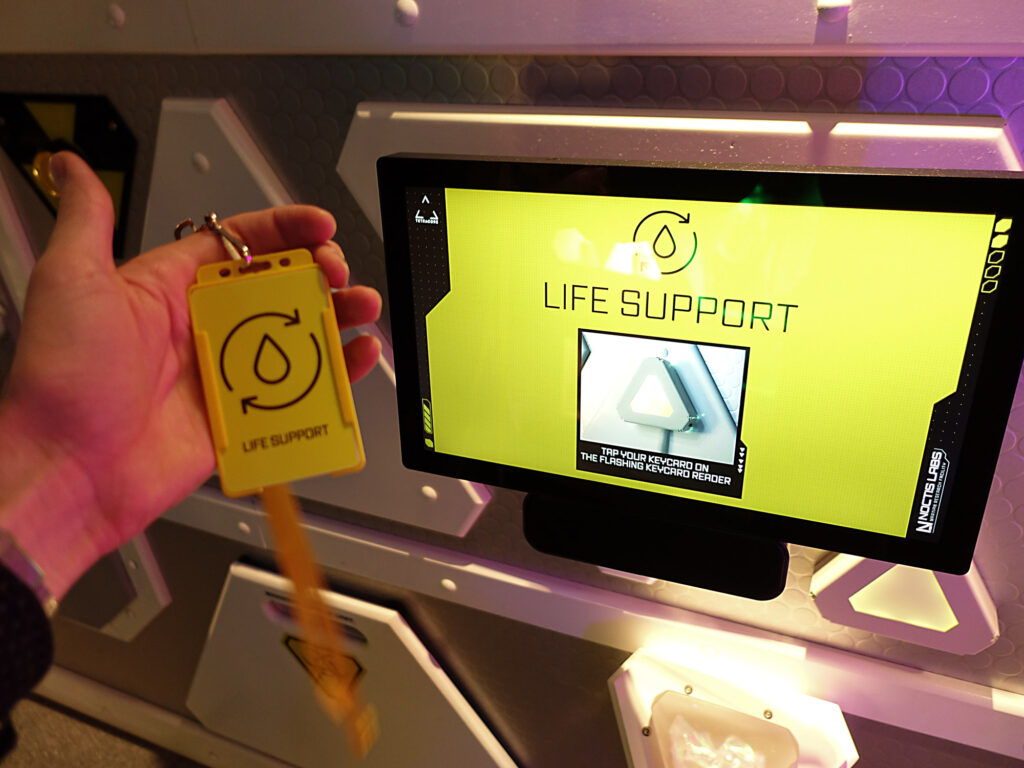
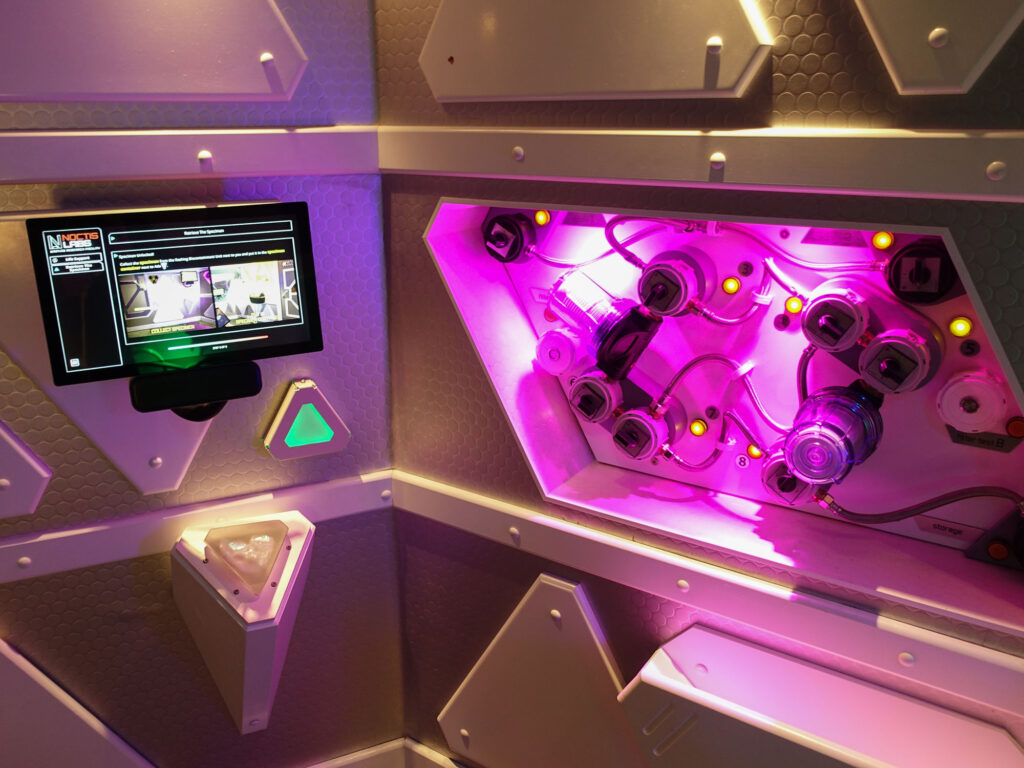
The research station is also a key element in the educational aspect of Tetrastar Spaceport. Since the National Space Centre is a science centre, involving an educational element is important in the creation of new experiences. “We have two teams at the NSC who are concerned with this aspect,” Aaron explains. “The first is the education team, who must connect to the school curriculum [the information being learnt by children for different years]. Second is the space comms team, who design what we communicate to the public: what are the key things we want guests to learn and take home with them?”
“For Tetrastar Spaceport, we wanted guests to learn that Mars is an inhospitable place. We do that through talking of radiation, and through the dust storm affecting solar power in the ride. Guests should feel like they need to escape from Mars, it’s not an easy place to live.”
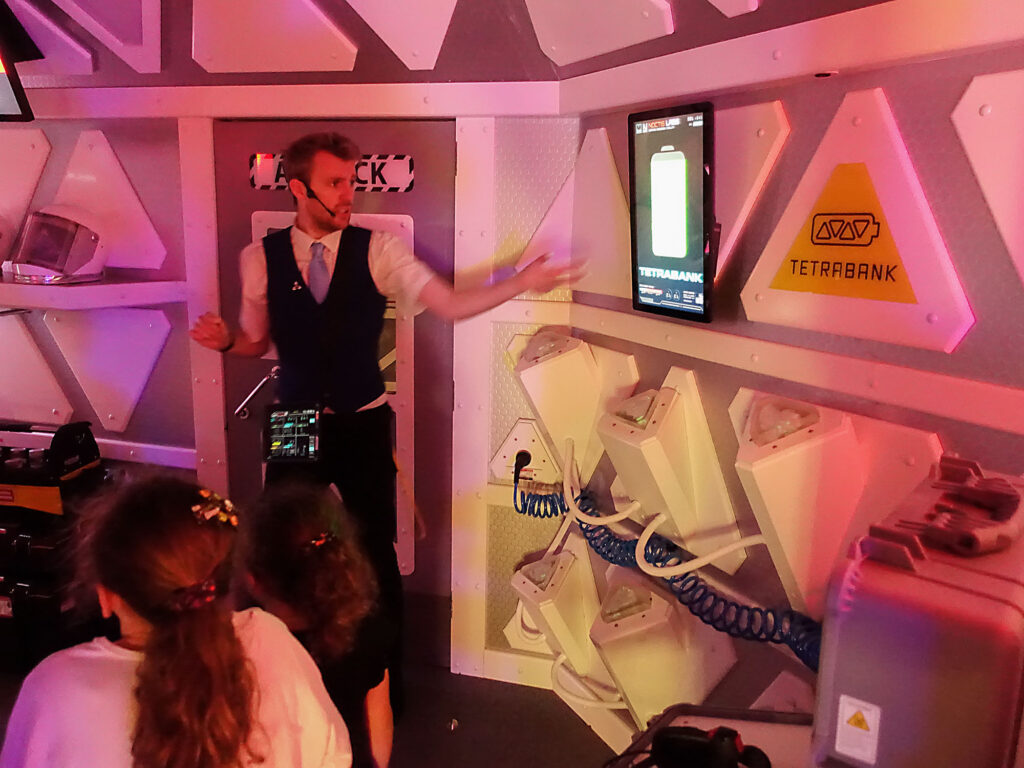
To connect the experience better to the school curriculum, the team developed a longer version of the experience which is tailor-made for school groups. Whereas guests of the normal experience stay around 3.5 minutes in the research station, the school class version takes 30 minutes, creating a 1 hour mission. “In that version, each group does about 4 or 5 tasks throughout the time. Those are individual tasks within their team station, like plotting points on a map. All these tasks relate to a larger narrative. We use additional props for this version.”
“Switching between the two versions became quite complicated,” Aaron continues. “We tried to keep most of the rooms the same in both experiences; the simulator ride is identical for example. But we needed two versions of the briefing to link better to each of the experiences. What we also did was integrate an interactive option: the school group can submit their name and have it displayed over the entrance of the attraction – ‘Welcome to x school’. We can even tie that to the award that is rewarded in the end.”
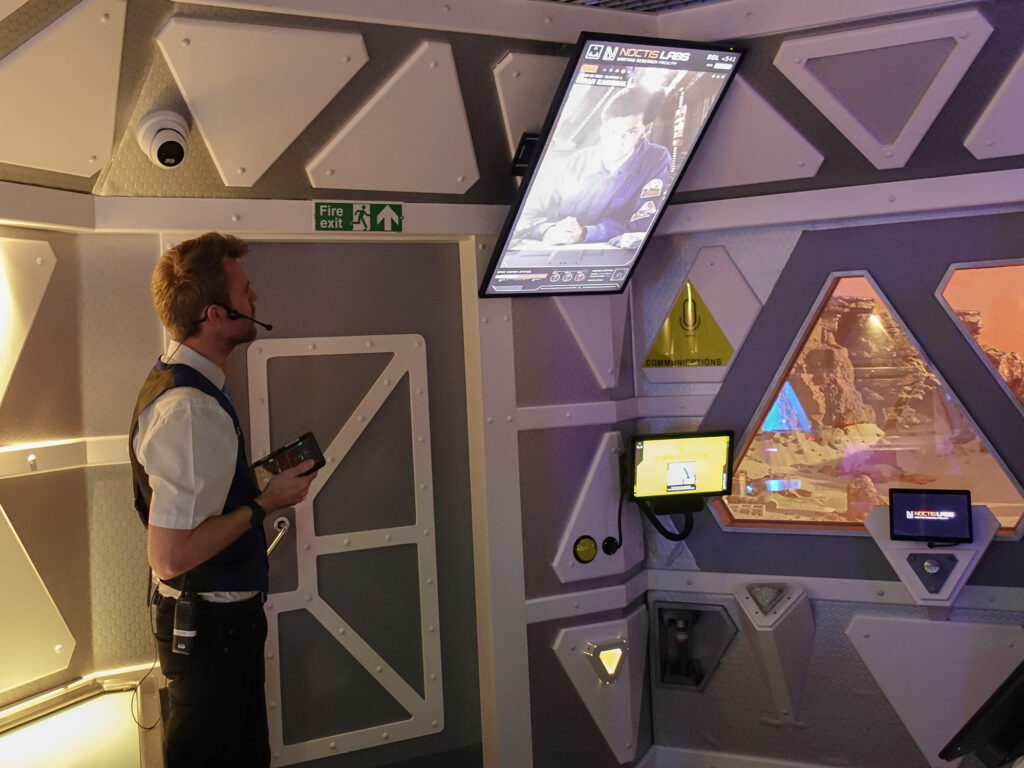
Operation and future perspectives
Even though Tetrastar Spaceport is quite special in the way it needs to be operated, requiring technically competent and trained performers, it was relatively easy to integrate the new ride within the National Space Centre. “It’s similar to the motion platform ride we had in there previously,” Aaron says. “In terms of how it works with everything, it flows well with the other exhibits. One challenge at the moment is that some people are missing it, as it’s towards the end of the tour and the theming makes it too well hidden as to what the experience is. We plan to tease a little bit more of what to expect, without giving away the big moments of course.”
“On quiet days, we do however get repeat riders. That is quite a commitment, looking at the length of the experience and all the other things to do at the Space Centre. But people seem to like it, and when they ride another time, they might get another task at the research station or take a different route in the space craft.”
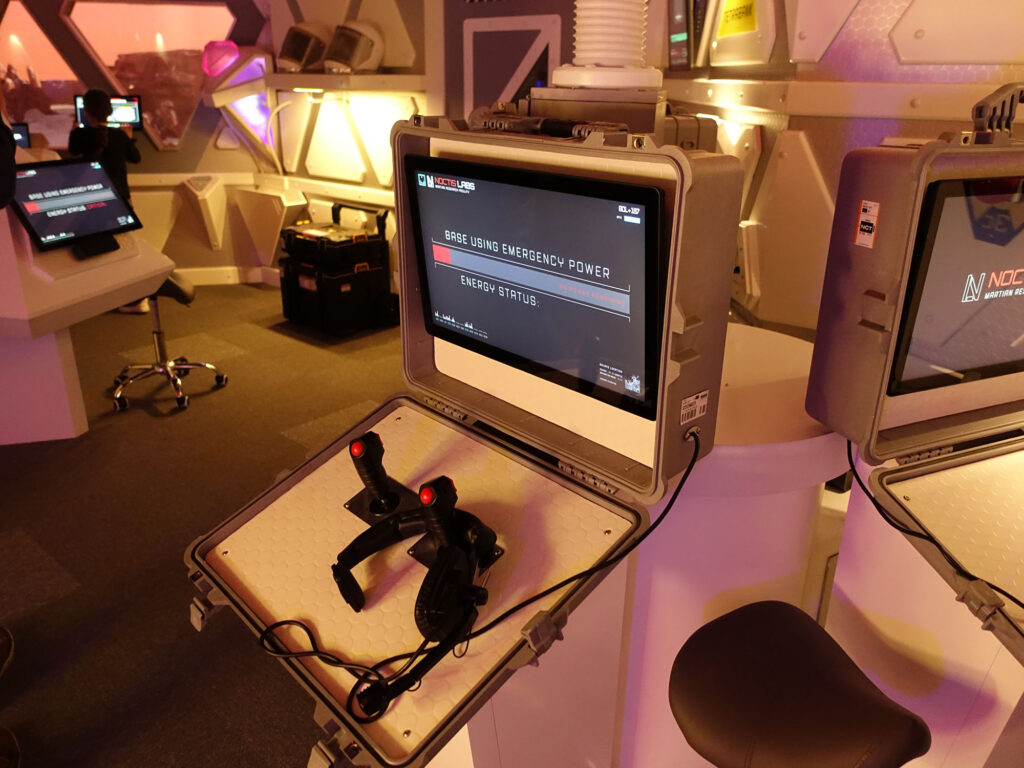
As a final question, we asked Aaron and Stephen what ideas from Tetrastar Spaceport they would like to take along to the next experience at the National Space Centre. “We want to make more of this style of experiences,” Aaron replies immediately. “Immersive, interactive, with real-time media content, actors, walking through different rooms. It’s the combination of all these aspects that make Tetrastar such a rich experience and that we want to take along. Maybe for the Space Centre, but we’re also talking to some other potential centres that might want to roll it out as well.”
With these last words, Aaron specifies exactly what makes Tetrastar Spaceport such a special and personal experience. It’s the combination of all these aspects, for which inspiration was derived from many different types of themed experiences, that culminates into something special. By choosing all elements in the correct way, the NSC Team created a varied yet coherent experience which leaves everyone, children and parents alike, with a big smile on their faces. The DRdb Team would like to thank to NSC Creative team for the warm welcome and the opportunity for an interview, and we congratulate them on creating such a special new experience.
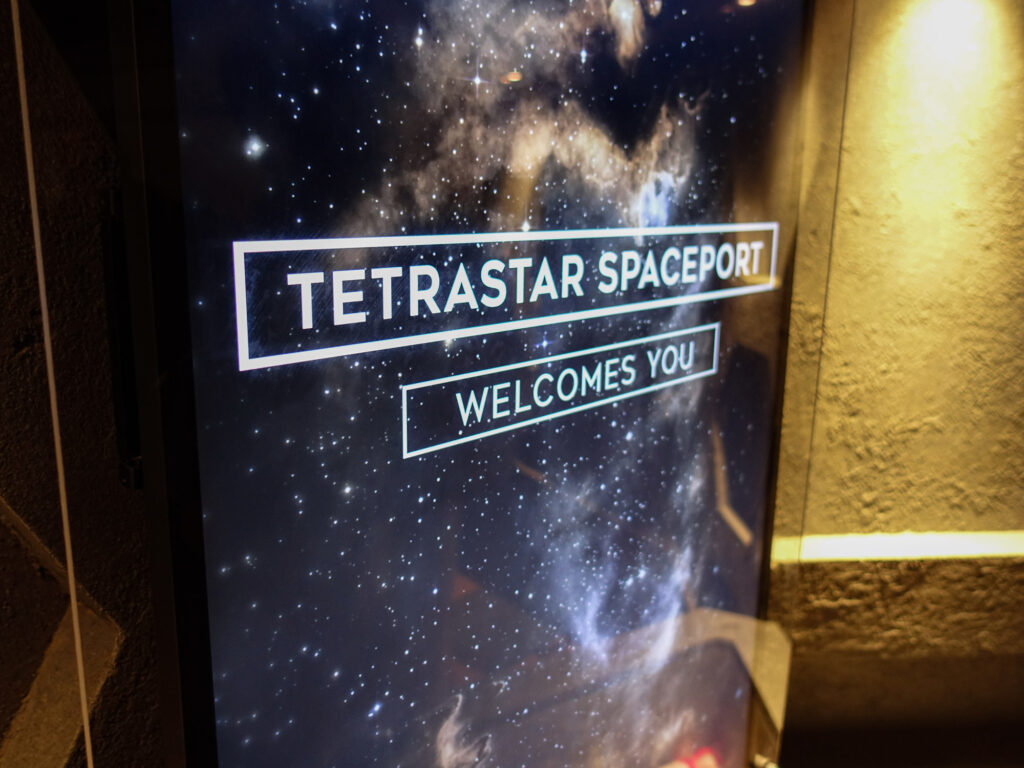
© Dark Ride Database
Visit by Luc, Erik and Steven (27 October 2022)
Article and pictures by Luc

